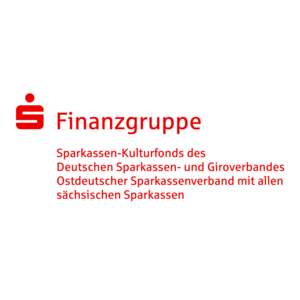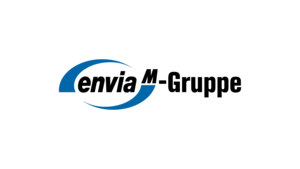
Chemnitz 2025
In 2025, the Saxon industrial city of Chemnitz is the European Capital of Culture. The 38 partner municipalities from Central Saxony, the Ore Mountains and the Zwickau region form the Capital of Culture region. A rich shared cultural and industrial heritage links Chemnitz and the surrounding region. The title is an invitation to embark on a multifaceted journey of discovery to the east of Germany in the centre of Europe.
The unseen becomes visible
"C the Unseen" - the motto for Chemnitz 2025 is both an invitation and a program. The aim is to make the previously unseen and undiscovered visible. The title "European Capital of Culture" shines a spotlight on people, places and activities that have not yet been the focus of tourist attention. They want to show themselves and warmly welcome their guests.
A year full of experiences and encounters
January 18, 2025 marks the start of a year with countless events and opportunities to get involved. There will be festivals, exhibitions, theater, performances, but also sports, culinary delights, workshops and events. Many local actors are involved, as well as renowned national and international artists. The program creates experiences and encounters. It conveys the past and present of the people who live here. New places are created as well as opportunities for active participation.
Places of making and change
Chemnitz locates itself as an Eastern European city in a West German state. It is characterized by great tradition and many upheavals, most recently the end of the GDR and the renaming of Karl-Marx-Stadt back to Chemnitz. A pronounced doer:in mentality and the ability to constantly reinvent oneself are deeply rooted in this region. Social change has always been a catalyst for innovation.
Industrial culture, then and now
Chemnitz, Zwickau and the surrounding region have contributed significantly to Germany's industrial development, particularly in the textile, mechanical engineering, railroad and automotive industries. Mining in the Ore Mountains once made the region an economic stronghold and the traditional arts and crafts are still known worldwide today. The Erzgebirge/Krušnohorí mining region has been a UNESCO World Heritage Site since 2019.
Industrialization brought wealth and prosperity as well as a heyday of art and culture. Top-class museums and unique architecture bear witness to this. The region is characterized by a high density of medieval, Renaissance and Baroque castles as well as theater, music and art collections. There are also a variety of hiking, cycling and water routes.
Andrea Pier
Managing Director
Stefan Schmidtke
Managing Director Programme
Jason Jack Weißbach
Office Management | Consultant to the Commercial Director
Behlül Taskingül
Assistant to the Managing Director Programme
Iris Mäding
Management Assistant
Matthias Vogel
Receptionist
Friederike Teubel
Receptionist
Johanna Lötzsch
Receptionist
Moritz Mahltig
Receptionist
Annett Schulz
Temporary receptionist
Sophie Behrendt
Temporary receptionist
Regine Leistner
Temporary reception
Anni Schulz
Temporary receptionist
Hanna Skovgaard-Sörensen
Working Student
Tessa Melzer
Working Student
Mirko Lenk
Head of Process Management
Karolina Boxberger
Project Manager Evaluation & Data Management
Anne Kurzweg
Project Manager Monitoring & Evaluation
Deborah Lämmel
Working Student
Hannah Pöschl
Working Student
Project management & competence building programme
Frank Schönfeld
Head of Project Development
Jonas Diercks
Project Coordinator
Annemarie Rieseler
Project Developer KOSMOS & Living Neighbourhood
Steffen Biernath
Project Manager
Michal Sandor
Project Manager
Pascal Anselmi
Project Manager Capacity Building
Marcus Heinke
Project Manager Capacity Building
Tina Winkel
Project Manager Garage-Campus
Maria Fiedler
Working Student
Moritz Zscherp
Intern
Living Neighbourhood
Dr Julia Naunin
Project management
Yvette Glaß
Planner
Tina Langklotz
Project coordinator
Lara Paul
Working Student
Karl-Benedikt Schmidt
Working Student
PURPLE PATH - Art and Sculpture Trail
Alexander Ochs
Curator PURPLE PATH (freelance)
Julianne-Ingrid Csapo
Production management
Susan Börner
Production assistance
Kathrin Barwinek
Curatorial Assistance PURPLE PATH (freelance)
Jolanda Inserra
Production assistant
Michelle Tzschupke
Working Student
#3000garages
Agnieszka Kubicka-Dzieduszycka
Curator #3000Garages
Ann-Kathrin Ntokalou
Curatorial Assistant & Project Manager #3000Garagen
Michelle Auerbach
Project Assistant #3000Garages
Vanessa Azeroth
Project Assistant #3000Garages
Makers, Business & Arts
Josephine Hage
Curator Makers, Business & Arts
Maja Frank
Communication Makers, Business & Arts
Nina Rüb
Communication Makers, Business & Arts
Stefanie Abelmann
Event Management Makers, Business & Arts
Selina Eckstein
Event Assistance Makers, Business & Arts
Lisa Laser
Project Management Makers, Business & Arts
Laura Tzschätzsch
Network Manager Makerhubs
Marlene Kropp
Working student
The "Makers, Business & Arts" project was implemented by the Landesverband der Kultur- und Kreativwirtschaft Sachsen e. V. with funding from the European Capital of Culture Chemnitz 2025 gGmbH.
Team Generation
Christian Knaack
Head of Team Generation
Dr Alexandra Takats
Head of Participation of Older People
Lena Rothe
Project Manager Youth Participation
Julia Palarz
Project Manager Youth Participation
Julius Blum
Editor
Ludwig Sontag
Project Assistant
Valentin Mici
Project Assistant
Reannah McRae
Working Student
Feline Weltz
Working Student
Ellen Ay
Working Student
Emma Sophie Kirmse
Working Student
Volunteer Programme
Dirk Zinner
Head of Volunteer Programme
Michelle May
Coordinator Training Programme
Anton Schneider
Coordinator International Volunteering Programme
Carsten Richter
Coordinator Capital of Culture Region and FSJ\ESK
Delfina Zdebel
Assistance Volunteer Programme
Alisa Golomzina
Head of Production
Sina Rohrlack
Artistic-technical direction
Jakob Heinzmann
Production management
Susanne Berthold
Production management
Sebastian Häger
Production management and creative project development
Hannah Bickhoff
Event manager and production manager
Paul Viebeg
Scheduler
Oksana Fischer
Production Assistant
Aline Schmidt
Production Assistance
Robert Steinbrecht
House and event technician
Robert Malt
House and event technician
Uwe Wydra
House and event technician
Sarah Börner
Working Student
Nikita Denisov
Working Student
Press & Communication
Mareike Holfeld
Head of Press & Communication
Frizzi Seltmann
Project Manager Tourism, Marketing & Communication
Federico Antonelli
Editor
Maria-Luise Kunze
Project Manager Press & Communication
Paula Kirchner
Project Manger Digital Communication
Emma Volkova
Working Student
Anne Schober
Working Student
Lydia Klemm
Working Student
Daniel Mittelstädt
Working Student
Marketing & Brand
Ralf Wolfermann
Creative Director & Brand Communication
Caroline Witosseck
Project Manager Marketing & Brand
Jana Beier
Project Manager Marketing & Brand
Maria Khaychuk
Project Manager Marketing & Brand
Anna Kunke
Marketing & Brand Assistant
Luisa Sophie Grätz
Marketing & Brand Assistant
Fabian Weißpflog
Art Director
Peter Rossner
Content Creator
Sybille Sonntag
Head of Marketing & Sponsoring
Carolin Müller
Project Manager Marketing & Sponsoring
Katharina Maigitter
Project Manager Marketing & Sponsoring
Maike Hänsel
Working Student
Marlen Genschorek
Head of Controlling & Finance
Hannes Conrad
Controller
Manuela Baumann-Leibiger
Accounting
Tom Reichardt
Accounting
Christin Kostrewa
Accounting Assistant
Luise Vorwerk
Manager for third-party funds
Hanna Klug
Manager for third-party funds
Sofie Agaeva
Working Student
Júlia Bucz
International Relations and Protocol Officer
Anja Neubauer
International Relations and Protocol Assistant
Julia Sophie Blank
Working Student
Franziska Mathée
Head of Legal & Human Resources
Juliane Bergelt
Research Assistant in the Legal Department
Lena Boberach
Legal Counsel
Sylvi Winkler
HR employee
Rewa Tamboli
Working Student
Sarah Balck
Working Student









































